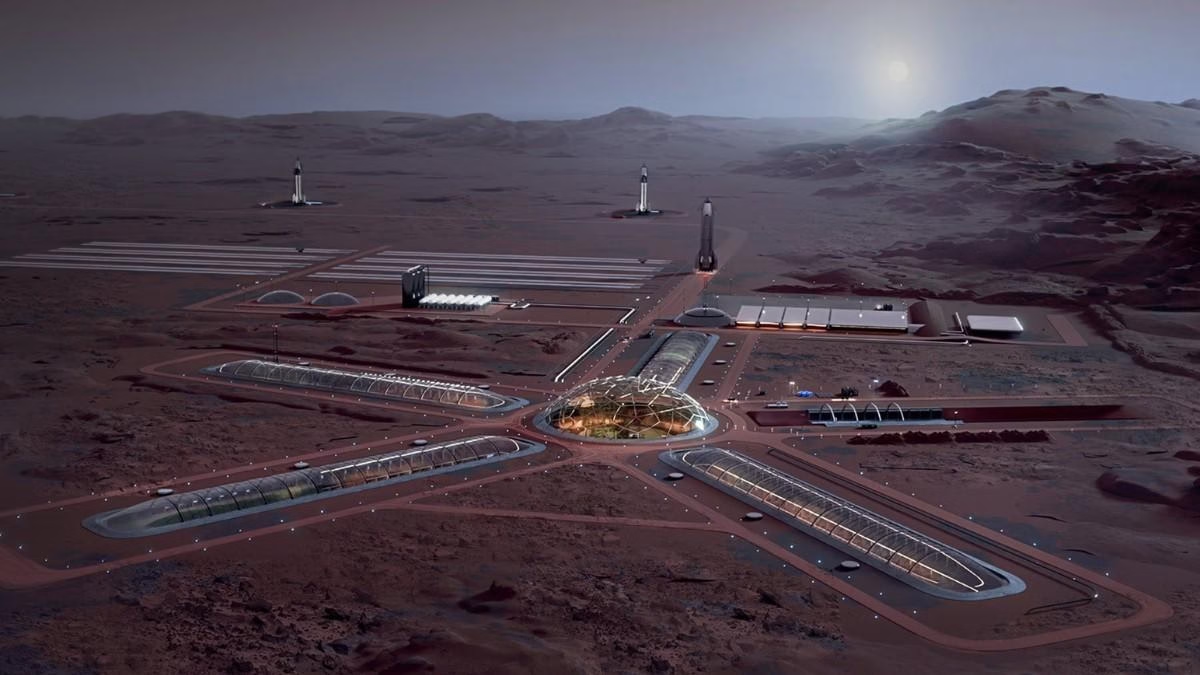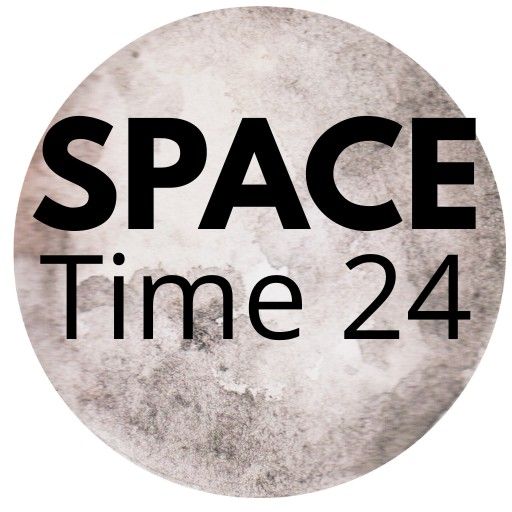Could Arcadia Planitia Starship landing site will be humanity’s first foothold on Mars? Discover why SpaceX may choose this icy, flat Martian plain as the Starship landing zone. Read more detailed information about Arcadia Planitia Starship landing site in this article-

Arcadia Planitia Starship Landing Site for Mars Colonization
Introduction
Arcadia Planitia Starship landing site- as humanity prepares to take its first steps toward settling another planet, selecting the right location is critical. Mars, the most viable destination for colonization, presents unique challenges, including radiation, harsh climate, and limited access to life-sustaining resources. In Elon Musk’s ambitious vision of colonizing Mars through SpaceX’s Starship, one Martian region stands out as a potential launchpad for this new chapter of human history—Arcadia Planitia.
Located in the northern hemisphere of Mars, Arcadia Planitia has emerged as one of the most promising candidates for the first human landing and settlement site, largely due to its accessible water ice, relatively flat terrain, and favorable solar exposure. This article explores the geographic and scientific features that make Arcadia Planitia a leading choice for the Starship landing site on Mars, and how it fits into the broader plan for permanent human presence on the Red Planet.
Where Is Arcadia Planitia?
Arcadia Planitia is a large, smooth plain in the mid-latitudes of Mars’ northern hemisphere, roughly located between 35 to 50 degrees north latitude and 150 to 180 degrees west longitude. The region lies northwest of the massive Tharsis volcanic plateau and is bordered by the Elysium volcanic region to the southeast.
The area is part of the larger Utopia Planitia and Amazonis Planitia plains systems, which are among the flattest and most geologically stable zones on Mars. These features make Arcadia Planitia particularly attractive for safe spacecraft landings and future infrastructure development.
Why Arcadia Planitia Starship landing site A Storng Candidate For Landing
1. Abundant Subsurface Water Ice
One of the top requirements for any potential Mars base is access to water. Studies by NASA’s Mars Reconnaissance Orbiter (MRO) and the Mars Odyssey mission have confirmed that Arcadia Planitia contains vast reserves of water ice just a few centimeters to meters below the surface.
This ice can be extracted for:
- Drinking water and hygiene
- Agricultural use in hydroponic systems
- Electrolysis to produce oxygen and hydrogen (rocket fuel)
The ability to extract and process water on-site is central to SpaceX’s plan to create a self-sustaining colony and refuel Starship rockets for return trips to Earth.
2. Flat and Smooth Terrain
Starship is a massive spacecraft, approximately 120 meters tall when fully assembled with its Super Heavy booster. It requires a broad, even surface for safe landing, takeoff, and unloading of cargo and personnel. Arcadia Planitia offers one of the flattest terrains on Mars, which significantly reduces landing risks.
This flat terrain is also ideal for:
- Solar panel farms
- Greenhouses and pressurized habitats
- Launchpads and cargo handling zones
3. Solar Power Potential
Mars receives about 43% of the sunlight Earth does, so solar energy is a viable power source—especially in equatorial and mid-latitude regions. Arcadia Planitia’s moderate latitude ensures stable sunlight exposure, allowing for reliable energy generation to power life-support systems, habitat heating, and communication equipment.
4. Moderate Climate and Dust Activity
Unlike regions near the poles or in the southern highlands, Arcadia Planitia experiences relatively fewer dust storms and more moderate temperatures. This helps in:
- Preserving sensitive equipment
- Maintaining consistent solar energy output
- Reducing wear and tear on surface systems
Additionally, its northern location ensures shorter travel distances from Earth during certain orbital alignments, lowering mission costs and complexity.
Scientific Interest and Strategic Location– Arcadia Planitia Starship landing site
Arcadia Planitia also offers a scientific goldmine for researchers. The region contains lava flows, ancient glacial deposits, and impact craters that can reveal critical information about:
- Mars’s volcanic and climate history
- Ice age dynamics
- Potential microbial life preserved in ice
For future Martian settlers, understanding the geology and climate of the region is vital not just for science, but for infrastructure planning and risk assessment.
Role in SpaceX’s Mars Colonization Plan: Arcadia Planitia Starship landing site
SpaceX’s long-term goal is to transport up to one million people to Mars, and every aspect of the plan is engineered for efficiency, safety, and sustainability. Arcadia Planitia fits this mission in several ways:
- Its resource availability supports in-situ resource utilization (ISRU), which is essential for long-term sustainability.
- Its flat, accessible surface supports Starship’s vertical landing and launch model.
- The location allows for potential expansion into nearby regions such as Amazonis Planitia and Utopia Planitia as the colony grows.
Though SpaceX has not officially confirmed Arcadia Planitia as the final landing site, public comments, orbital imagery analysis, and engineering criteria suggest it is one of the leading contenders.
Site Selection Criteria for Starship: Arcadia Planitia Starship landing site
The ideal Starship landing site on Mars must have accessible subsurface ice for water and fuel production, and flat terrain for safe landings and construction. Consistent solar irradiance is crucial to power life-support systems and equipment. The area should also offer geological stability to support long-term infrastructure. Low dust activity helps maintain machinery and solar efficiency. Lastly, scientific value adds importance, offering opportunities to study Mars’s climate, geology, and potential signs of past life.
Arcadia Planitia meets or exceeds expectations in nearly all these areas.
Mars Base Alpha: A Future Martian Settlement
Elon Musk has referred to the first human outpost on Mars as Mars Base Alpha. If Arcadia Planitia is selected as the landing zone, the region would host this historic base, complete with:
- Inflatable or rigid habitats
- Regenerative life-support systems
- Vertical farming units
- Solar farms and communication arrays
- Launch pads for refueling and return missions
With its location, Arcadia Planitia would serve as the main hub for future Mars expansion, including exploration missions to other regions and eventual terraforming research.
Challenges of Building in Arcadia Planitia: Arcadia Planitia Starship landing site
While Arcadia Planitia offers many benefits, it also comes with challenges:
1. Radiation Exposure
Mars lacks a magnetic field and thick atmosphere, exposing settlers to harmful cosmic rays. Protective habitats, possibly built underground or shielded with regolith, will be necessary.
2. Cold Temperatures
Average surface temperatures in Arcadia Planitia can drop below -60°C. Insulated habitats and efficient heating systems are essential.
3. Isolation
The remote location means that communication delays, emergencies, and psychological stress must be planned for in the mission architecture.
These challenges are being addressed through simulated missions on Earth and research into autonomous systems, AI-controlled life support, and next-generation materials.
NASA’s Research on Arcadia Planitia: Arcadia Planitia Starship landing site
NASA has also shown interest in Arcadia Planitia. In 2019, a study published using data from the Mars Reconnaissance Orbiter identified several accessible ice-rich zones in Arcadia that met NASA’s criteria for human landings.
NASA’s Mars Ice Mapper mission, expected to launch in the coming years, will likely play a role in further evaluating the region for human exploration and settlement.
Conclusion: Arcadia Planitia Starship landing site
Arcadia Planitia is more than a patch of Martian terrain—it is a potential gateway to the future of humanity beyond Earth. Its flat landscape, rich subsurface ice, and favorable solar exposure make it a strong candidate for the Starship landing site and the foundation of the first permanent Martian settlement.
If selected, Arcadia Planitia could witness the landing of the first humans on Mars, the establishment of Mars Base Alpha, and the beginning of a civilization that thrives among the stars. As technology advances and missions move forward, this seemingly barren region may become one of the most important locations in the history of space exploration.
FAQs: About Arcadia Planitia Starship Landing Site
Q1. Where is Arcadia Planitia located on Mars?
A: Arcadia Planitia is situated in the northern mid-latitudes of Mars, between 35° and 50° north latitude and 150° to 180° west longitude. It lies northwest of the Tharsis volcanic region.
Q2. Why is Arcadia Planitia considered a top candidate for the Starship landing site?
A: It offers a rare combination of flat terrain, abundant subsurface water ice, moderate dust levels, and consistent sunlight—making it ideal for landings, habitat construction, and resource utilization.
Q3. How will Starship land safely in Arcadia Planitia?
A: The region’s smooth and stable surface provides a safe and predictable environment for vertical landings and takeoffs, which are essential for the massive, reusable Starship vehicle.
Q4. What role does subsurface ice play in colonization?
A: Subsurface ice can be harvested and used for drinking water, crop cultivation, oxygen production, and methane-based rocket fuel—making the colony more self-sufficient.
Q5. How will solar power be used at the landing site?
A: Arcadia Planitia receives enough sunlight to power solar panels, which will generate energy for habitats, communication systems, environmental controls, and scientific equipment.
Q6. Has SpaceX officially chosen Arcadia Planitia for landing?
A: While SpaceX has not officially confirmed the site, multiple studies and mission planning documents suggest Arcadia Planitia is among the leading options based on operational criteria.
Q7. What makes Arcadia Planitia scientifically valuable?
A: The region contains ancient lava flows, permafrost, and glacial remnants, offering insights into Mars’ climate history and the potential for discovering signs of past life.
Q8. Will Mars Base Alpha be built in Arcadia Planitia?
A: Elon Musk has mentioned that Mars Base Alpha, the first human outpost, will be located near accessible water ice and safe terrain—features that Arcadia Planitia offers.
Q9. What challenges might settlers face in Arcadia Planitia?
A: Challenges include radiation exposure, extreme cold, isolation, and the need for advanced life-support systems. However, its location minimizes some of the harsher Martian conditions.
Q10. Can fuel be produced on Mars at this location?
A: Yes. SpaceX plans to produce methane and oxygen using local resources via the Sabatier reaction, which combines Martian carbon dioxide and hydrogen derived from water ice.
